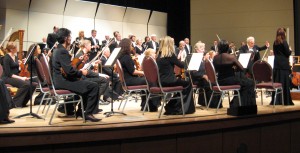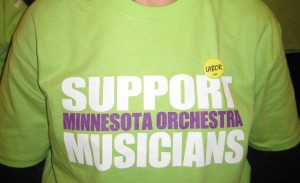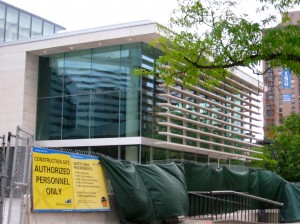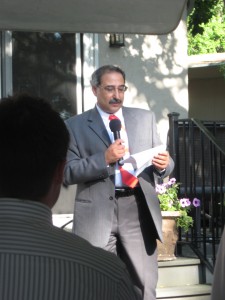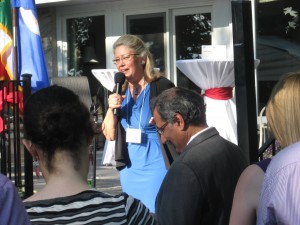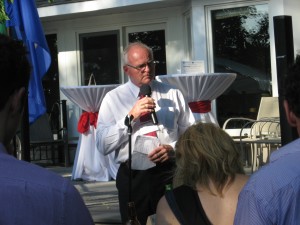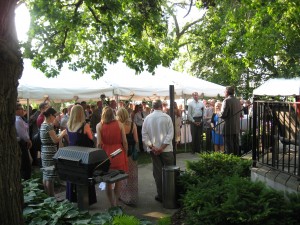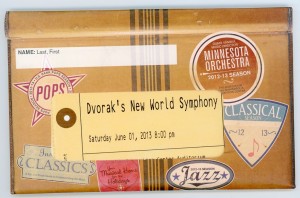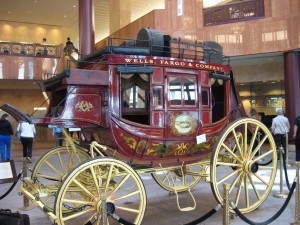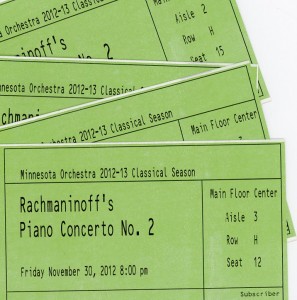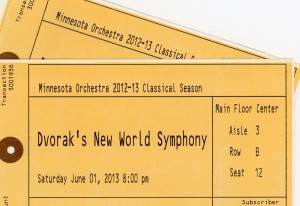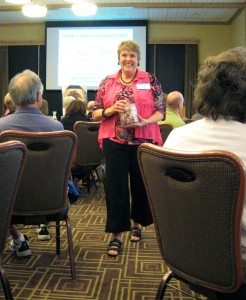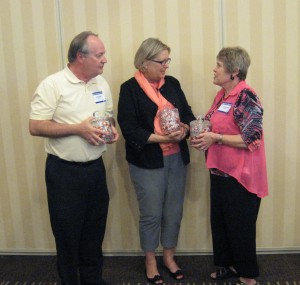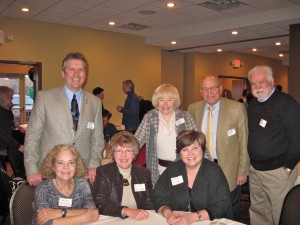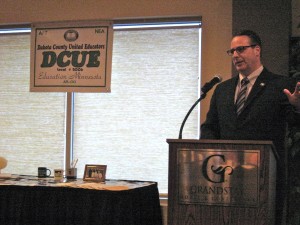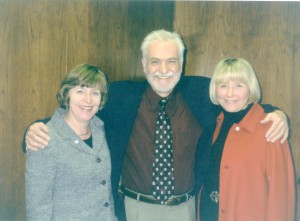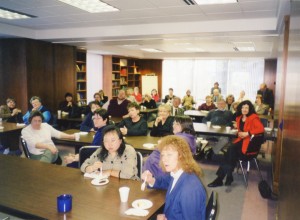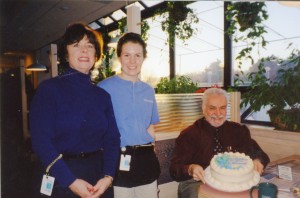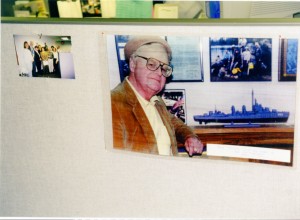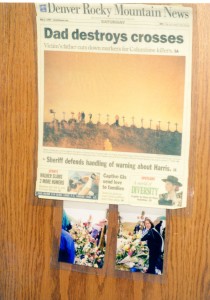UPDATE: June 2, 2013: In this post, reference is made to a 100 question state-wide test on North Dakota taken by the author at Sykeston High School in 1957. A post specifically about the test, including an answer key and more related information is here. The May 9 post also includes two assessments of the future of North Dakota which were included in textbooks published in 1957 and 1963. They are interesting to read.
NOTE: This is a very long post which may be of interest to residents of Sykeston ND, or those interested in rural education in ND and elsewhere 50 and more years ago.
Other posts in the series about Sykeston ND:
Feb 11, 2013: “Sykes High, oh Sykes High School”
May 9 A 1957 Social Studies Test
June 12 Remembering Sykeston in late 1940s
June 28 Snapshots in History of Sykeston
June 29 Sports in 1950s small towns in North Dakota
July 3: Remembering Don Koller and the Lone Ranger
July 10: After a visit to Sykeston and Valley City, July 5 and 6, 2013
A postcard brought news of a July 4-6 2013 celebration in Sykeston ND, celebrating the Centennial of Sykeston High School, from which I graduated in 1958.
While I attended the high school only the single year of 1957-58, it is of far more than routine importance to my family. My Dad, Henry, was Superintendent of the School from 1945-51 and again from 1957-61. Mom, Esther, taught in one of the two elementary classrooms there from 1957-61. When the school year began in September, 1945, Dad was 37, Mom had just turned 36. When they left Sykeston in 1961 they were 53 and 51.
Today I’m 73. It is hard to imagine my parents as that young, back then….
Sykes High was a central and crucial part of my life from age five till eighteen, never more than a block or two away from where we lived – home.
I have all of Mom and Dad’s teaching contracts, which are all basically identical to the three sample contracts from the Sykeston years which you can view here: Contracts 45-57-60001
Every contract, in their long careers, was for one year: when you signed the contract, you agreed you were fired at the end of the year. So we kids migrated with them from town to town throughout North Dakota.
But Sykeston held a different status. It was very much our “hometown”.
Right after my graduation in 1958, I went around the town taking (I would guess) ten color photographs with a new camera. Nine of them survive, including this one of the high school, below. (The other eight are at the end of this post. Anyone from Sykeston in that era will recognize them all.)
(click on all photos to enlarge them)
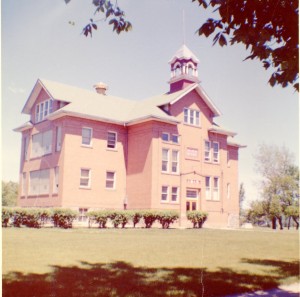
Sykeston High School 1958 by Dick Bernard
When Dad came to Sykeston for the 1945-46 school year, Mom was expecting child #4, Frank, who was born in November. She stayed in the tiny town of Eldridge west of Jamestown. Her sister Edith stayed with her for the last months.
Frank was named for Dad’s brother, our
Uncle Frank, who had been killed on the Arizona at Pearl Harbor, Dec. 7, 1941.
Sometime in the summer of 1945, the family came to Sykeston and Doc and Liz Dummer showed them around. The Germans had just surrendered, beginning the end of WWII, in May 1945 (some of our cousins were Germans, conscripts in the German Army – War is not abstract, “us” vs “them”). Mom’s brother, George Busch, had been hired to teach at Sykeston in the Fall, but was an officer on the
Destroyer Woodworth DD460 in the Pacific and his wife, my Aunt Jean, filled in for him till he was discharged in early November, 1945. His ship and many others docked in Tokyo Bay September 10, 1945. As Grandma Rosa wrote about that time: “Hurrah, the old war is over”.
Jean, then George, taught at Sykeston High School for two or three years. Their first child, Mary Kay, was born in the Sykeston years.
Here are a couple of period photos from early our beginnings at Sykeston ND:

Jean and Gloria Dummer and Mary Ann, Florence and Dick Bernard, probably summer of 1945 at Arrowwood Lake.
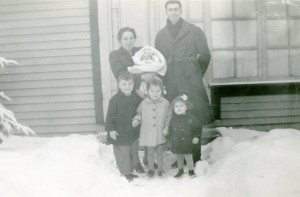
Bernards at the Hafner House on the High School Block, probably January, 1946. Esther and Henry with Frank, and Richard, Mary Ann and Florence.
Dad succeeded Everett Woiwode as Superintendent; some years later, Everett rejoined the Sykeston staff while Dad was Superintendent. Both were graduates of Valley City State Teachers College.
Among the local ‘gang’ of kids in the 1940s was Everett’s son, Larry, who at one point was a student at Sykes High, and who is one of North Dakota’s notable citizens, among the recipients of the
North Dakota Theodore Roosevelt Rough Rider Awards. For awhile I roamed the Sykeston streets with Larry and the gang!
Writing this brings back many memories of the school* and the town. Two of the most prominent are these:
I vividly remember what had to be Memorial Day in May of 1946. There were crosses on the high school lawn, and an honor guard. It was less than a year after the horrors of World War II.
On another occasion, I’m guessing it was about 1950, a bunch of we boys were playing basketball in the little gym in the basement of the school – I remember the low ceiling and gray painted concrete floor. Dad came down stairs for some reason and fell down the last few steps. Being kids, we didn’t pay much attention, but I remember his fall to this day. He was in his early 40s then, so he probably recovered quickly. We kids were basically clueless and useless.
In April 1948, Dad took this picture of the school:
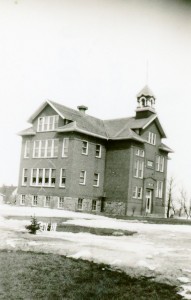
Sykeston High School April 1948
Like all small town schools in ND, Sykeston never had many students. The 1983 Centennial History of the town gives a good description of education, including the below photo of the High School at its opening in 1913. Here are the relevant pages of the 1983 History:
Sykeston ND Schools001. At the July 2013 Reunion, a single page supplement to the 1983 book was made available, including the graduates from 1984-2005. If you have the book, this is worth printing to complete the history:
Sykes Grads 1984-2005001
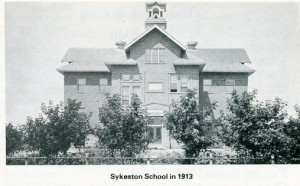
The 1983 History list the names of the graduating seniors from 1916 to 1983. Perhaps still in the hall between the old and new school are the high school senior graduation photos from 1944-2005, the year the school closed.
In 2008 I took photos of all of these, and they are available on an open
Facebook album page, including some other photos I added to the display. There was no graduation photo for 1945, possibly reflecting the turmoil around WWII, winding down in Europe, but still intense in the Pacific region. The 1944 photo includes several in military uniform.
Here is a list of the number of graduates in each year from 1916 to 2005:
Sykeston Seniors 1916-2005. In all there were about 1050 high school graduates over the schools 92 years. The average class was about 11. The largest high school graduating classes were in 1927, 1936, 1965 and 1967. There were 31 graduates in 1927.
The smallest classes were post baby-boom years. In 2001 and 2002 there were only two graduates, and in 2005, the last year of the school, there were three graduates.
Sykeston’s data gives an interesting look at the ebbs and flows of population (and birth rate) in rural North Dakota, and is probably generally representative of other similar tiny towns in the Midwest.
Probably the proudest year for the town and the High School was 1950 when the Boys Basketball team won Third Place in the State Class C tournament in Valley City. I recall being there, but I was not yet 10, and I was not properly fixed on watching the games!
Much later,
Travis Hafner (class of 1995) made a name for Sykeston as Designated Hitter for the Cleveland Indians.
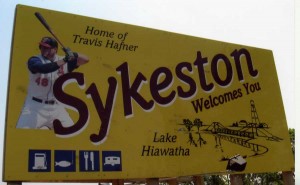
Luckily, some years ago, I learned that Jean Dummer (Sister Jean) had the 1950 school annual, and I borrowed and copied it. The entire annual is available here:
Sykes Hiawatha 50001 You can read, there, the exploits of the 1950 Boys Basketball team.
And I kept the 1958 Hiawatha, which Duffy Sondag and I co-edited. Here is that Yearbook:
Sykes Hiawatha 58001 Even back then I wondered why the publisher, Intercollegiate Press of Kansas City, chose the mountain-scape for the inside front and back covers of the Annual. It didn’t quite match with the Sykeston I knew!
Here’s the high school Boys Basketball team for 1958-59, the year after I graduated:
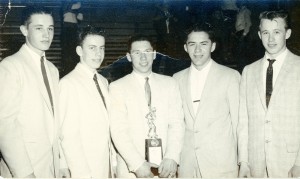
1959 A Team: Jim Bierdeman Bob Miller, Duane Zwinger, Jim Merck and Lowell Fruhwirth
And here’s a portion of the 1968 school newspaper, (reduced from the original legal size), apparently run on the same cantankerous old mimeograph machine that we’d used in 1958:
Sykes High news May 68001 The news sheet would win no awards, I’d guess, but nonetheless it was news.
The newspaper says it is Vol. 34; the 1950 Annual was Vol. V, and 1958 was Vol. VIII. What if any meaning those numbers have is unknown.
In 1974, here’s what Sykeston’s Main Street looked like, through my Massachusetts brother-in-laws eyes.

Main Street, Sykeston, 1974, by Hank Maher
For little towns, the public schools were an essential part of the very life of the community. When they closed, as Sykeston High School did at age 92, an important part of the town was lost with them: there remained fewer reasons to come to town.
PERSONAL
I’m old enough now (I’m 73 on this very day, May 4, 2013) and far enough away from those Sykeston years so I can reveal how I was (not) as a scholar at Sykes High!
As my 1957-58 Report Card indicates, I was not an especially diligent scholar. I was, in a four-letter word, l-a-z-y…. I only took those few courses, likely, because there were no other classes to take that I had not already completed somewhere else.
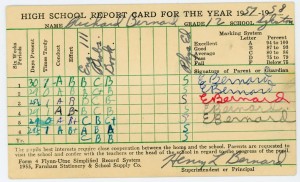
I had no inclination to make mischief, then. That natural kid impulse was never active. Dad was in the Superintendents office, or teaching Problems of Democracy (“Probs”); Mom was a floor below, teaching elementary. They were good teachers and gentle people, but not inclined to let us run free. Somebody from Sykeston said that it seemed I was “afraid of my Dad”. I won’t disagree. I had nothing to be especially afraid of, but he commanded respect. I didn’t test the boundaries.
Sometimes there is a suspicion that teachers kids get some sort of break. Not so, in my family. Best as I can tell, we were treated like everybody else. But neither was I one to overly attend to book-learning, then.
In the last Sykeston year, I did win the County “Know Your State” competition, and in December went to Grand Forks for the finals. In my memory, I finished second, behind Ron Lokken, the son of the President of Valley City State Teachers College.
Here is the test that we all took that November:
ND Hist Govt Ctzn 1957001 It is interesting to note what knowledge they emphasized, then.
You can take it yourself, and see how you do.
Here is the list of the ND County finalists who went to Grand Forks December of 1957:
ND Hist Co. Winners 1957001 Maybe you’ll see someone who became famous for some reason or another. Not I!
In the spring of 1958, my sister, Florence, was confirmed at St. Elizabeth’s, and we took a family photo at our house just east of the St. Elizabeth Town Hall.
I’m very much aware, at 73, that my parents, in that photo, were only 48 and 50 years old. My oldest child, son Tom, is 49….

1958 – Sykeston. Back: Esther, Richard, Florence, Mary Ann and Henry; front John and Frank Bernard
After graduation, I finally got the motivation to go to college. The motivator was unusual….
My first job was moving dirt, etc. by the wheelbarrow full at the under-construction St. Elizabeth Church across the street from the school. It was somewhere close to where the bell tower of the Church would be constructed that I made the decision that maybe going to college was a pretty good idea, and I then went straight through, summers and all, at Valley City State Teachers College, graduating in December, 1961.
In retrospect, I remember meeting Mr. Lou Bruhn at Valley City State Teachers College sometime earlier. He was Dean of Men there, and he’d been at the college when Mom and Dad were there. Maybe that helped soften me up?!
Ah the memories.
Here’s a 1960 photo of that then-brand new Church where I got education “religion”, plus the other photographs I took in May of 1958 in Sykeston.

Postcard of new St. Elizabeths Catholic Church, Sykeston ND ca 1960

Lake Hiawatha Spring 1958

Bridge to the Park, Spring 1958

Kids on the bridge, Spring 1958, the middle one my brother John, I think
From Cletus Fruhwirth: I was reading your thoughts on Sykeston, May 4. That colored picture – Kids on the bridge 1958. The tall skinny kid is my brother
Larry Fruhwirth, he would be 18yrs. The little boy is Johnny, I’m sure. and the little girl may be Patty Neumiller, who lived a mile west of us south of Sykeston. In case you didn’t know it, we lived 21/2 miles so. and a 1/4 mile east along highway # 30 which is straight south of Sykeston, and goes down to Medina, N.Dak.. Clete F.

The Swimming beach at Hiawatha Spring 1958

The Water Tower, Spring 1958

Our new car, out by the dam, Spring 1958

Lilacs beside the lake, Spring 1958

St. Elizabeth School Spring 1958
Being introduced to the evils of cigarettes (at least, cigarette butts) inside the merry-go-round on the school grounds (it had something of a wooden frame inside, and some slats were missing and we could get inside). Dad almost caught we hoodlums once. My career as a smoker was very short. He caught me later that same summer. Thanks, Dad!
Waiting for mandatory shots for athletics in the fall of 1957. Somebody suggested that the doctor inside had a square needle. Of course, that was crazy, but the suggestion was persuasive.
In 1957-58 there were huge surpluses of dairy products and entire pounds of butter were often on the lunchroom table. One of us had a prodigious appetite for butter. Either he got over it, or he has major defenses against cholesterol!
Seeing in a closet in the third floor west classroom a bunch of bound volumes of the early history newspapers from Sykeston. I hope they were given to the North Dakota Historical Society.
Trying to do printing on the mimeograph machine in the office. It was hideous. I empathize with those young scholars who tried to do the 1968 school newspaper that is linked earlier in this post.
“Zoo period” – the big study hall every afternoon, which Mr. Hanson tried to supervise. To my recollection, I never participated (fear, mostly). Some of the guilty will remember. I’ve come to have admiration for Mr. Hanson (who you’ll see pictured on the last page of the 1958 Hiawatha). I often wonder about him.
Henry and Esther Bernard
by Dick Bernard, May 4, 2013
I knew Henry and Esther as Dad and Mom, and from grades 8-12, as my “teacher”. Other readers of this piece who knew them will have a different context: teacher, neighbor, St. Elizabeth’s….. Together, they had 14 annual contracts teaching in the Sykeston High School from 1945-51 and again 1957-61.
Dad (1907-97) was his adult height, 6’3″, when he was in 8th grade in Grafton ND. That was near giant size about 1920. But to my knowledge, he never participated in sports. Likely reason was flat feet. At times, including Sykeston, he had to coach, probably solely because nobody else would or could. He always enjoyed sports. But coaching sports wasn’t his thing.
He was always religious – his best childhood friend became a Monsignor, and he’d likely have become a Priest if Latin hadn’t been so difficult. I never knew he – or Mom – to be pushy about religious beliefs with others, or with us after we left home. But back then, religion could be serious business, whatever your “brand”. One brand of “Christian” was not always very “Christian” with other brands. Then it was socially respectable, a usual practice, for one Christian religion to have not much to do with another.
Today it still happens, but is more covert, but in some ways far more dangerous than the intolerance was, then. Whenever one labels a group as being the problem (“Jews”, “Japs”, “Muslims”, etc.) there is potential for trouble.
To the end of his long life, Dad was bookish. He had both a Masters in Education and an Administrative Credential from University of North Dakota. He was a lifelong learner.
I seem to recall that during 1957-58 in Sykeston he was on a multi-year project to read the biographies of all the U.S. Presidents (Eisenhower was President, then). He’d get the books from the State Library in Bismarck. I never asked if he’d finished his project, but my guess is that he did. He was disciplined that way.
When at the end of July, 1949, the barn roof blew down at Mom’s parents farm near LaMoure – we were there at the time, a couple of hundred feet away – Dad stayed and helped rebuild the roof – a huge task. This was during our Sykeston years. My uncle Vince, now 88, still remembers Dad’s help.
Particularly after Mom died (1981), Dad became a very active volunteer, tutoring Hispanic kids in English at the school across the street from their home in San Benito TX. He did many other volunteer things as well.
Mom (1909-81) was my teacher in 8th grade, out at Ross in 1953-54 (Ross is in the midst of todays oil fields, and was then as well). She taught grades 7 and 8 and I have good memories of her as a teacher. Brother John, then of Kindergarten age in the time before Kindergarten was common, spent the day in the classroom with the rest of us.
She once recalled that as a youngster she had something of a dream to be a salesman. Yes salesMAN. She was enthusiastic. Her cheers stood out at basketball games.
She, too, was religious. They came to Sykeston in large part because St. Elizabeth school was there. In 1946 I started First Grade. All of we kids spent several grades at St. Elizabeth.
All in all, I thought Mom and Dad were pretty good partners. We were kept on a short leash and had our home chores. In my day, a 9:00 curfew was the norm.
Moving on: To be a teacher in those “good old days” was to be insecure. Between my birth and youngest brother John’s graduation from high school – 26 years – we made ten moves, two of them to Sykeston, two away from Sykeston.
We kids were accustomed to unanticipated moves. For our parents, sometimes the move was an undesired reality; at others, there seemed to be a better opportunity in another town. Available and adequate housing was often an issue. More than once, housing was far less than adequate.
I’ve done a great deal of family history over the years, and in some papers I found a letter from my Dad dated early April, 1990, responding to a question I had asked about the first move from Sykeston (1945-51) to Karlsruhe (1951-53). In relevant part he said this: “
When I was not rehired in Sykeston, I did not know what to do. Apparently Father Sommerfeld [Sykeston pastor and immigrant from Germany] and Father Zimmerman [another native German Priest in nearly 100% German-Russian Karlsruhe] were good friends and Father Sommerfeld suggested that I apply for the school in Karlsruhe. One Saturday morning I drove to Karlsruhe to inquire. I was filled with doubts. When I got to the road that led to Karsruhe, north of Drake, I stopped the car, got out and wondered, should I go on or turn back home? I did go on. Don’t know whether I talked to Father Zimmerman first or a school board member, but apparently things worked out all right. I remember that on the way back to Sykeston that I picked up a couple of discarded automobile tires as we were still in need of the furnace at Sykeston….”
(Our Sykeston home, then, was the most northern house in town. Later Gartners lived there. The house has since burned down.)
After six years in three other places (Karlsruhe, Ross and Antelope Consolidated near Mooreton), we returned to Sykeston in 1957. I graduated from Sykes High in 1958; Mary Ann graduated in 1960.
Dad was again non-renewed in Sykeston at the end of the 1960-61 year, and the family moved to Tolley, where Florence and Frank graduated (1962 and 1963); thence to Tolna, where John graduated in 1966.
The early 1960s seems to have been a stressful community time in Sykeston and this seems to have had some impact on Dad’s employment. I was in college the last three years of their teaching in Sykeston, and almost never came home, so I don’t recall any talk about why the next non-renewal took place.
The Sykeston 1983 Centennial History says the addition to the high school was built in 1959 during Dad’s second four years at Sykeston. This apparently is in error. The addition was built after Bernard’s left in 1961. Assorted stresses may have related to changes at St. Elizabeth’s (the Centennial History says that “
the only lay [non-Nun] teacher in the school’s history, was employed in 1961-62″ – a really big deal).
Growth of high school age population due to the post WWII Baby Boom, resulting in the need for a bond referendum to build an addition to the public school was doubtless a major factor as well. Even by then, likely, some elders knew that behind the baby boom was decline. Why build a new school that won’t be necessary in a few years? It would be a reasonable question, just like, these days, a reasonable debate in Sykeston may well be how to treat this venerable old building, essentially unused for the last eight years? It is a difficult question.
One of my siblings recalls that about 1961 the issue of religious tensions loomed a little more important than usual in Sykeston. I don’t know that. Mom and Dad apparently chose to move on rather than challenge the dismissal, as some community members had encouraged.
I spent an entire career in public education and I know that schools are more than anything else cauldrons of relationships, positive and not so positive, and things do happen as school boards change, etc.
It takes a thick skin and luck and lots of political savvy to survive very long as a Superintendent of Schools, given changes in school boards, etc. There are, annually, unpopular decisions to be made. And mistakes are made, too.
In addition to my parents, I had two uncles and three aunts who were teachers, a number of them career, all beginning in North Dakota. The stories of employment instability were all similar. If the annual contract was not renewed for whatever reason, the only choice was to move on. I have said frequently over the years that teachers were truly public Servants (with a capital S). It was just how it was. I don’t think that many community members, anywhere, gave this much of of a thought.
Nonetheless, of all the places that we lived, I think all of we Bernard’s, including our parents, would agree that Sykeston was as close to a home town as we ever had, and we remember it as such.
And that is good!
Have a great reunion and remembering!
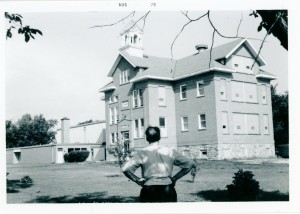
Favorite photo of Henry Bernard visiting Sykeston August, 1970
All are related very directly to reminiscing about Sykeston days.
I’m sure the Sykeston Committee would like to hear from you.
Here’s the contact page.

Dick with son-in-law and two of nine grandkids, Orlando, March 23, 2013

